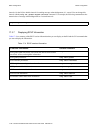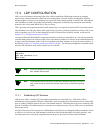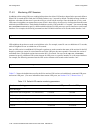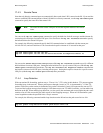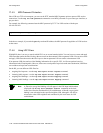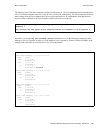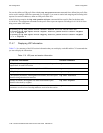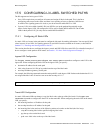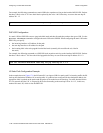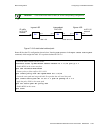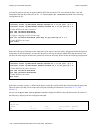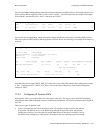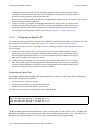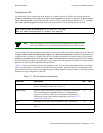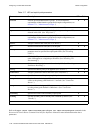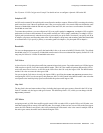
17-28 Riverstone Networks RS Switch Router User Guide Release 8.0
Configuring L3 Label Switched Paths MPLS Configuration
For example, the following command on a transit LSR looks at packets arriving on the interface MPLS-R2IN. Packets
that have a label value of ‘50’ have their labels replaced by the value ‘100’ before they are sent to the next-hop IP
address 20.1.1.2.
PHP LSR Configuration
In a static LSP, the PHP LSR removes (pops) the label stack and then forwards the packet to the egress LSR. Use the
mpls set interface
command to configure the static LSP on the PHP RS. When configuring the static LSP on the
PHP LSR, you specify:
•
the incoming interface or IP address for the path
•
the next-hop interface or IP address for the path
•
the incoming label value to be popped from the label stack (normally, this would be the only label in
the stack)
For example, the following command on a PHP LSR looks at packets arriving on the interface MPLS-R3IN. Packets
that have a label value of ‘100’ have their label popped before they are sent to the next-hop IP address 30.1.1.2.
L3 Static Path Configuration Example
In the example shown in Figure 17-8, the RS router R1 is an ingress LSR for a static path. For incoming traffic, the RS
looks up the destination IP address in its routing table. If a path has been configured for the destination address, the
appropriate label is pushed on the packet and the packet is forwarded on to the next hop. For traffic destined for the
50.1/16 network, the label ‘50’ is assigned by R1 before forwarding to the next-hop LSR at 10.1.1.2, in this case,
another RS router, R2, which is also the PHP LSR.
mpls set interface MPLS-R2IN label-map 50 swap 100 next-hop 20.1.1.2
mpls set interface MPLS-R3IN label-map 100 pop next-hop 30.1.1.2



